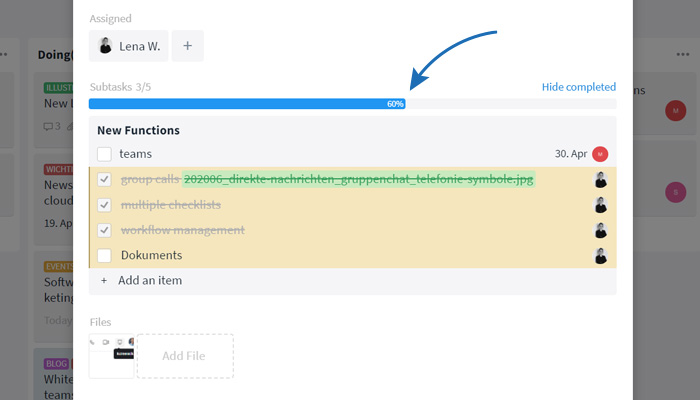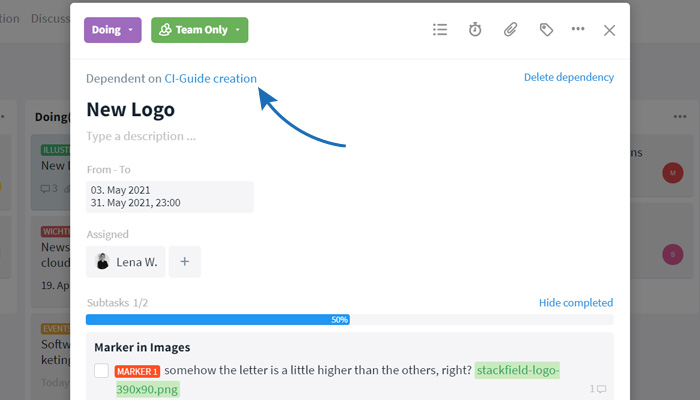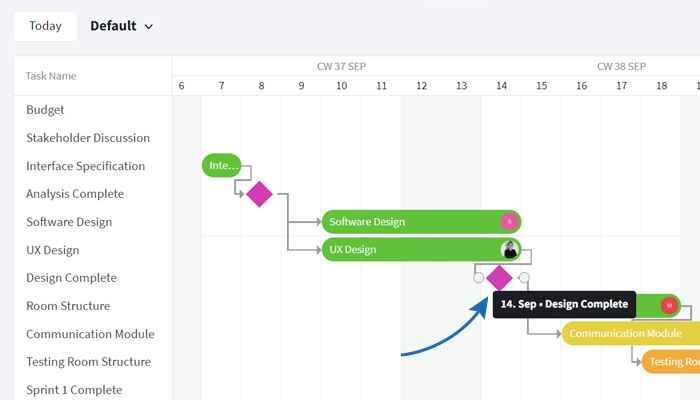There are some questions that keep crossing our minds... What came first: the egg or the chicken? Why do I need 5 cups of coffee to feel like a person? Why is this guy having a great time at the lake while I have a whole bunch of work ahead of me? Seriously...why!!! We're still not sure about the answers to the first two questions, but we may have some clue as for the latter.
It may be hard to admit, but "this guy" might simply be a little bit more efficient in what he is doing. Then again, maybe the difference is in the nature of his tasks - lots of small tasks that can be processed rather quickly, not the monster task you're pushing in front of you. Either way... microproductivity is your answer.
What is microproductivity?
MicroWHAT? Playing buzzword bingo is not our intention so, in a nutshell, microproductivity describes nothing more than breaking down large, monster tasks into several smaller tasks. Smaller tasks usually take less time and they clearly require less effort. Processing them is much easier for you, not least because you can enjoy the achievement of a goal or a small success after each small task. You have a series of "quick wins" that will continually reduce the amount of work you have to do.
"But the effort is the same, isn't it?" you may ask. That's true, of course, but...
Let's say you want to exercise a little more and get in shape before summer, which is why you've set a goal of completing 100 squats every day. At first, 100 squats sound almost impossible to accomplish. However, what if you split those 100 squats into 5 sets of 20 squats each? Twenty squats...even my weaker self thinks that's doable.
There's a reason for sayings like, "Small steps also lead to success."
Why does microproductivity work?
Microproductivity provides your brain with a reset button
Although our brains are quite limited when it comes to focusing on many things at once or simply keeping them on demand (thanks to information overload), microproductivity gives us access to a kind of reset button right inside our heads.
If we dive right into one of these monster tasks, we'll invariably get to the point where we're completely absent-mindedly staring into space, wondering "What was I about to do?". What's next on the agenda? How did I actually get here???".
All joking aside... our brain is simply overwhelmed when we burden it with too much at once. It tumbles from one unfinished task to the next until another one pops up. We break off what we're about to do and work our way into the next subject area. "Wasn't there something else we were supposed to be doing?" Productivity works differently and this is exactly the reason why Kanban prohibits multitasking. Not only do we repeatedly tear ourselves out of focus in such moments, we also create moments in which we allow ourselves to be distracted.
Small to-dos provide a remedy because we can fully focus on working through one at a time. We hit our reset button and we can ignore everything that has nothing to do with the current task.
Of course, being human, we are not able to memorize long lists of small subtasks either, which is why you should write them down, for example on a subtask checklist in Stackfield's task cards.
We are all goal-oriented workers
The best part is that with each task we check off, we have achieved a goal. We should not underestimate the psychological impact that this set check mark has.
When we feel progress and notice that something is moving, we also become more motivated, because reaching a goal (no matter how small the goal) releases dopamine, which evokes positive emotions. We want to see results - maybe even adulate ourselves a little - soon and as often as possible. To achieve that, we will work with more vigor toward our next goal. You see, our own motivation can be controlled and thus can have an immense impact on our success. Those who are constantly struggling with big tasks simply miss this opportunity.
With small goals, we also have the opportunity to better define individual work steps, because the monster task itself provides little guidance. So instead of desperately trying to implement the instruction "Create a new pricing page", you define precise work steps that guide you during execution: "Design a precise listing with the different services provided with product A in one hour".
Microproductivity opens up for feedback and check-ups
There are two ways to approach tasks.
The "Let's see how it goes" one, is the first. In other words, simply jump into a task, start working, then react to the circumstances and act accordingly.
Then again, quite a few of us are more prone to thinking everything through in detail beforehand. We don't want to just "somehow" complete tasks. What we undertake should have reason, so we don't have to make corrections later on. People who act this way also tend to procrastinate more. They simply don't know where to start because they are looking for the perfect springboard.
If you think about it, it makes a lot of sense that many people act according to the latter approach: subtasks build on each other. If we make a mistake, we might have to do a lot of corrections and we'll have done a whole bunch of work for nothing. On the other hand, of course, you can get lost in the musings, especially if it's one of those huge monster tasks that you're dealing with.
This is where microproductivity comes in: When you break large undertakings into smaller subtasks, you don't have to think everything through right away. After each subtask, you can check the result and get feedback. This way, you don't lose the entire project in case it turns out that you've gone astray. If project management methods like Scrum come to your mind at this point, you are absolutely right and know exactly how important reviews of intermediate results and feedback loops can be for the overall success.
How to efficiently implement microproductivity and make progress visible
Reading about strategies to increase productivity is one thing, but implementing them is quite another. How about in this case? Actually, microproductivity is quite easy to integrate into your work processes if you take advantage of the right features.
In any case, its most important to optimally visualize all intermediate goals and results, as well as subtasks, because this way you'll be reminded of all successes and able to keep track of everything as it progresses.
This is what microproductivity can look like:
You work with subtasks

For tasks that require multiple steps to complete and include multiple components, it's best to create a list of subtasks. They will be listed as checklists in Stackfields tasks so you can easily check them off once completed. All the key details that define the individual work steps can be added to the indivdual subtask in form of a description, a comment and a file. The great thing about it: Your task will continuously show the progress you have made by displaying a small progress bar. Only three more to go ... two ... one ... done!
You create multiple tasks and relate them to each other.

Sometimes it is not so easy to determine whether a task is actually a subtask or not, because most processes are interrelated at some point or another. For work steps that are too complex to be recorded as subtasks, it may be useful to create a separate task card instead.
In order to maintain connections, you can work with labels and links or you can set the tasks in dependency to each other. This way you can keep track of the order in which tasks have to be completed. Activate the timeline module in the room settings. This will also allow you to track all tasks on a timeline later on.
Whether you end up working with subtasks or multiple task cards depends entirely on the type of tasks and your internal processes. Find the easiest and most transparent way for you.
You visualize great projects using sprints and milestones

When it comes to project management, microproductivity is a must. Here, the goal is to achieve a project goal in a given timeframe and within a set budget, which requires smooth collaboration with a high degree of transparency and precise scheduling. Scrum and Kanban were not mentioned in this article by accident. Modern project management methods rely on detailed structuring of task processes to prevent exactly what also microproductivity is supposed to prevent: reduced productivity due to an overwhelming workload.
Projects will be visualized in project rooms that are specially designed for this purpose. They contain a number of additional features that support process tracking, allowing you to better monitor progress. Again, use the Gantt chart to record dependencies between tasks and highlight important milestones.
Project management methodologies such as Scrum, that rely on sprints, support microproductivity not only for individuals but for entire teams, allowing them to work with focus, at set intervals, to achieve defined intermediate deliverables.
Ultimately, comprehensive project management requires a combination of the aforementioned features to increase microproductivity: From the team's perspective, the project becomes more tangible by dividing up the processes, while individual project participants optimize the processing of their tasks.
By introducing microproductivity into our work processes, we can keep larger tasks manageable and make them easier to accomplish. The psychological impact this approach has on us can positively influence progress - and significantly at that. Those who can see the "light at the end of the tunnel" and define their work steps in detail right from the start are less inclined to procrastinate. Of course, this can be scientifically proven, but basically we all know it from our own experience.